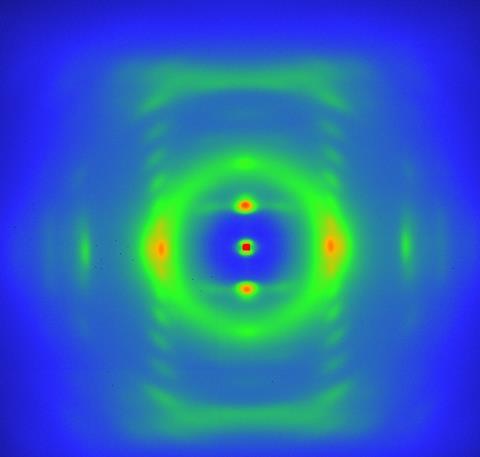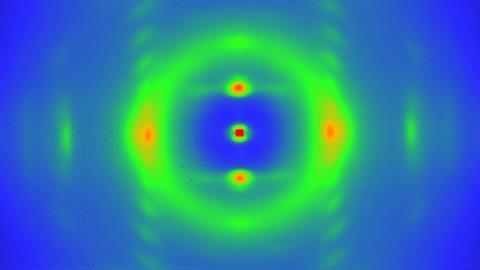When it comes to colour, the life sciences usually ‘win’. But analytical polymer chemistry is no stranger to colour either, as shown in this X-ray diffraction pattern of a nylon fibre.
Can you break down polymers like nylon with enzymes? That’s what researchers at Oak Ridge National Laboratory (ORNL) are trying to find out. To do this, you need as large a surface area as possible to give the enzymes as much chance as possible to do their job. Ideally, they would like to work with a powder, but it is rather impractical to grind nylon waste into a reproducible powder. An alternative is to spin it by conventional means into a thin fibre – which is reproducible – that can be observed using Small Angle X-ray Scattering (SAXS). Wim Bras, a distinguished scientist in polymer and soft matter science at ORNL, was curious how good the new SAXS setup was and tried to make a diffraction pattern from a single fibre, resulting in this fibre diffraction pattern. The fibre is a 20 µm thick nylon fishing line. The colours indicate how many photons landed at a particular location.

Do you have any nice images from your research? Send them to redactie@kncv.nl and they may appear in our magazine!













Nog geen opmerkingen